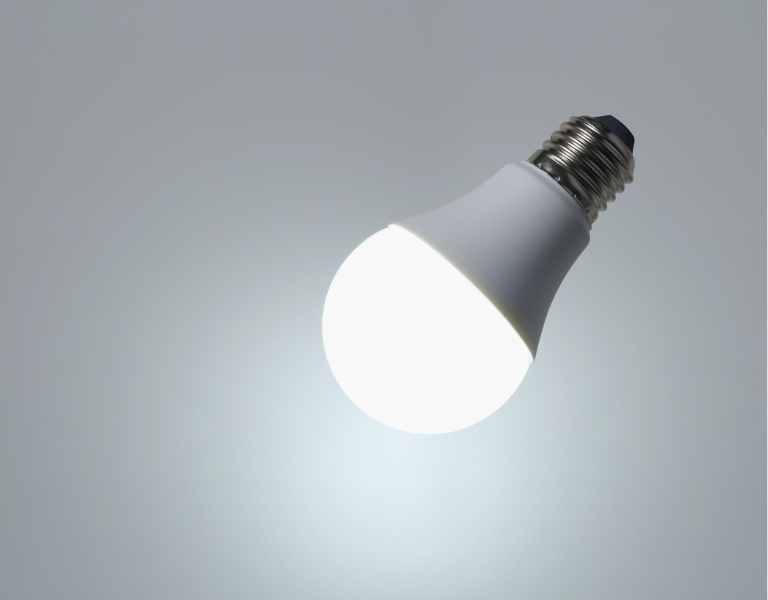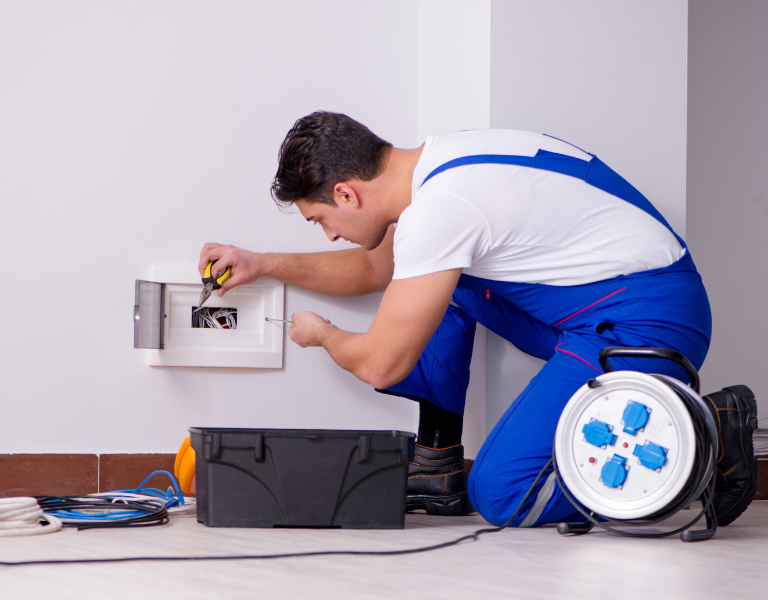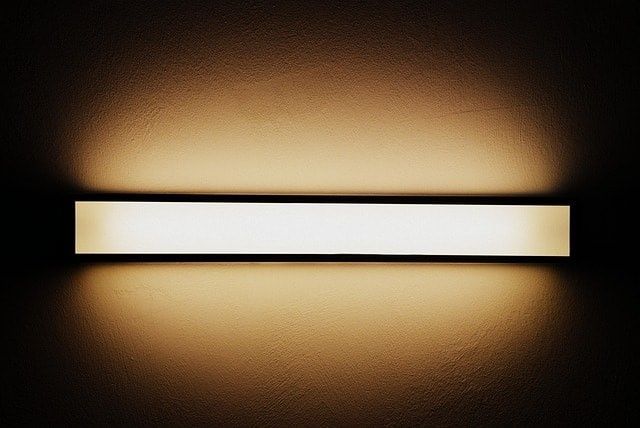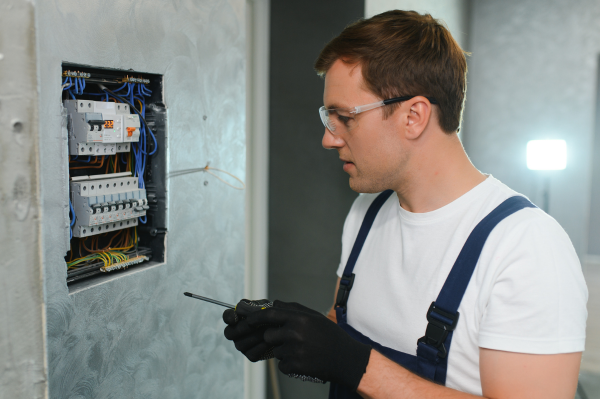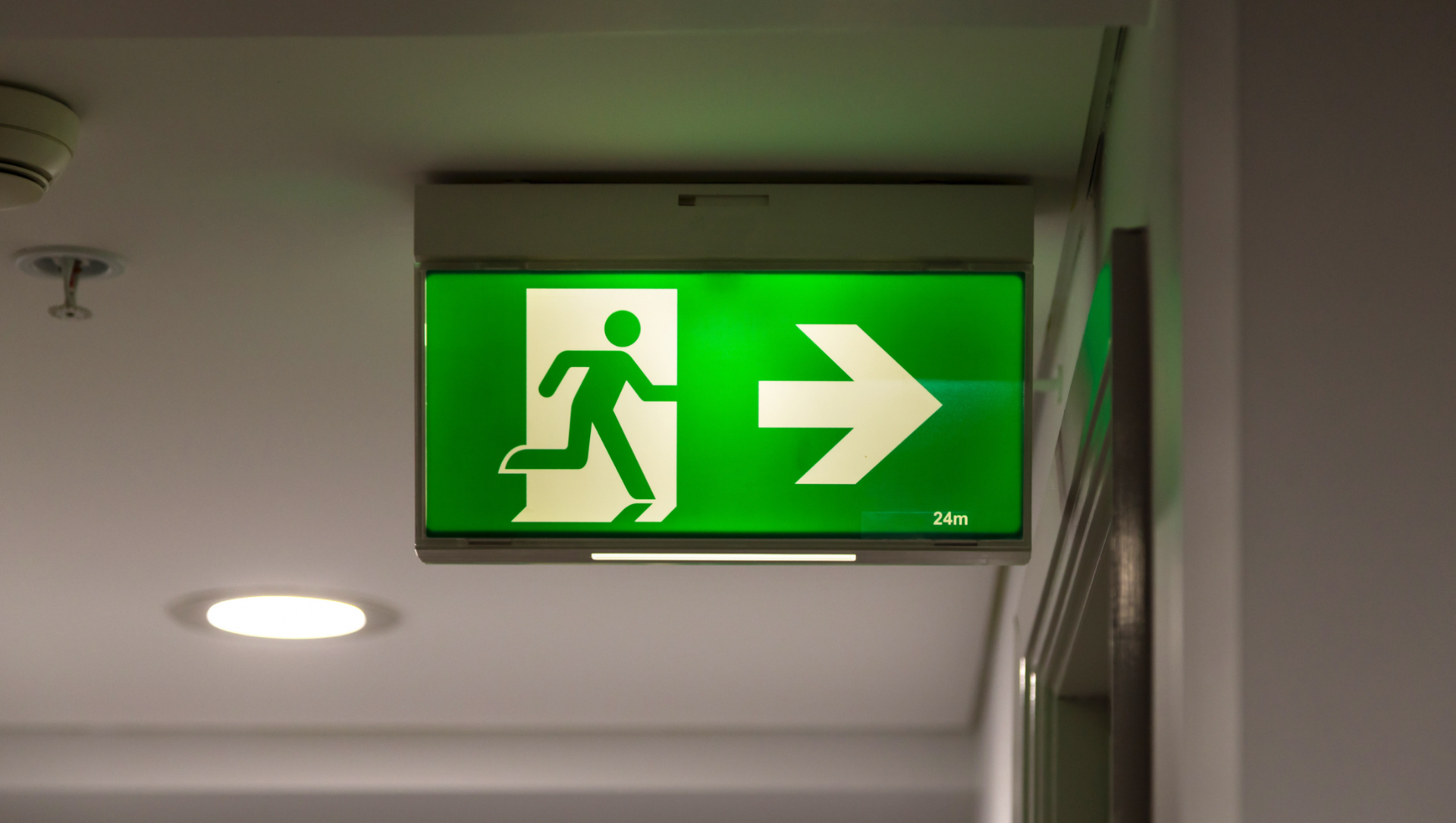EIC vs. EICR: Understanding the Key Differences
Two crucial documents often come into discussion regarding electrical safety and compliance in the UK: the Electrical Installation Certificate (EIC) and the
Electrical Installation Condition Report
(EICR). While both are essential in ensuring electrical safety, they have distinct purposes and applications. Understanding the differences between an EIC and an EICR is vital for property owners and landlords to ensure compliance with current regulations.
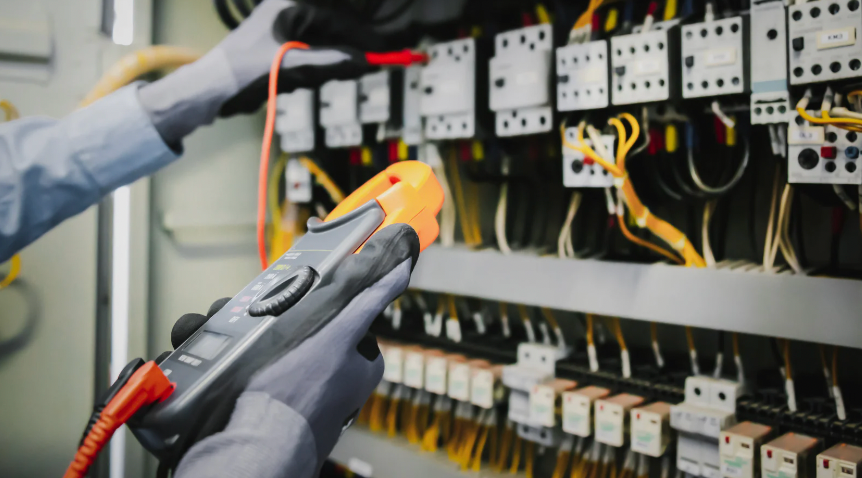
What is an Electrical Installation Certificate (EIC)?
The Electrical Installation Certificate (EIC) is a formal document issued when new electrical installation work is completed or significant modifications are made to an existing electrical system. It confirms that the electrical work complies with UK national standards and wiring regulations.
When is an EIC Required?
- For new electrical installations.
- When making significant modifications.
- After installing new electrical systems.
Key Features of an EIC
- Certifies that the electrical work completed complies with wiring regulations.
- Issued by a qualified electrician or an approved electrical contractor.
- Covers new installations and substantial changes.
What is an Electrical Installation Condition Report (EICR)?
The Electrical Installation Condition Report (EICR) is a document used to assess the condition of an existing electrical installation. It involves an inspection and testing process to identify any potential electrical hazards.
When is an EICR Required?
- At regular intervals for safety inspections.
- For rental properties (legally required every five years).
- Before purchasing a property, assess its electrical system.
Key Features of an EICR
- Assesses the condition of existing electrical systems.
- Conducted by safety inspectors or qualified electricians.
- Identifies safety hazards and non-compliant wiring.
Key Differences Between EIC and EICR
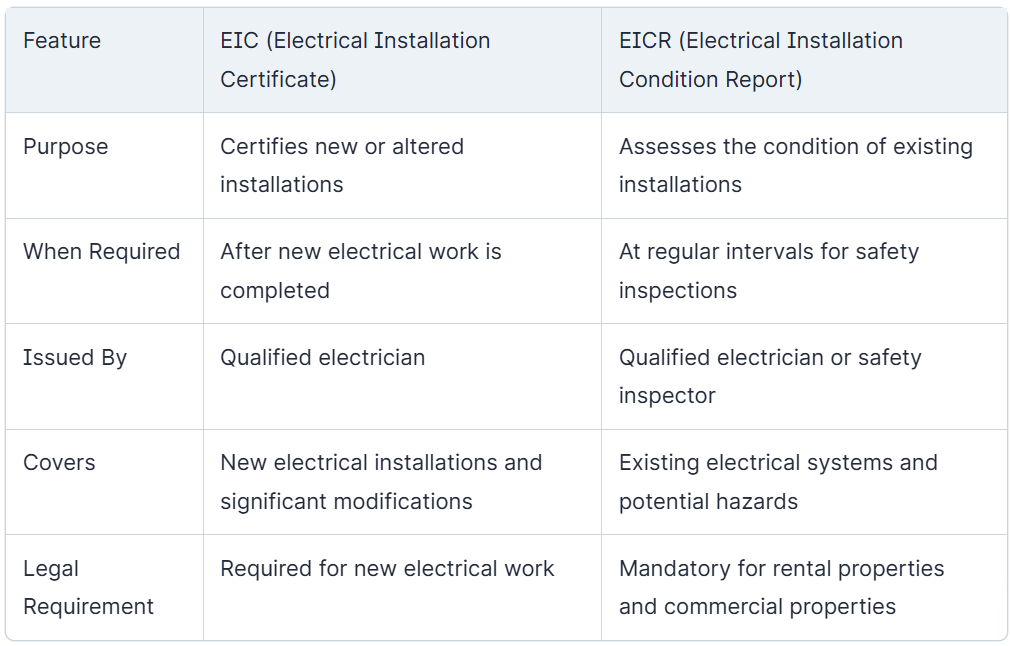
Why Are EIC and EICR Important?
Ensuring Electrical Safety
Both documents play a crucial role in maintaining electrical safety. The EIC ensures that new installation work complies, while the EICR ensures ongoing safety by identifying issues.
Legal Compliance and Safety Standards
In the UK, landlords and property owners must meet electrical safety standards to comply with current regulations.
Protecting People and Property
Faulty electrical systems can pose significant risks, including fire hazards and shocks. Regular EICR inspections help to identify potential hazards.
Who Can Issue an EIC or EICR?
Only a qualified electrician or an approved electrical contractor can issue an EIC or EICR.
How Often Should an EICR Be Conducted?
- Rental properties: Every 5 years.
- Commercial properties: Every 5 years.
Financial Commitment Involved
While obtaining an EIC or EICR involves costs, they are essential for safety compliance. Investing in regular inspections helps to prevent costly repairs.
Conclusion
Understanding the differences between an EIC and an EICR is essential for electrical installations. An EIC is issued after new electrical installation work, whereas an EICR is necessary for checking the condition of existing electrical systems. Individuals can ensure their electrical systems remain safe and compliant by following safety inspections and obtaining the correct certification.
FAQs
Is an EIC the same as an EICR?
No, an EIC certifies new electrical installations, whereas an EICR assesses the condition of existing electrical installations.
How long is an EIC valid?
An EIC does not expire but is only required when new electrical work is carried out.
Do landlords need an EICR?
Yes, landlords in the UK are legally required to have an EICR conducted every five years.
Can I sell my property without an EICR?
While an EICR is not always legally required for selling a property, having one can reassure buyers about the electrical system's safety.
What happens if my EICR fails?
If an EICR identifies safety issues, remedial work must be carried out by a qualified electrician.

